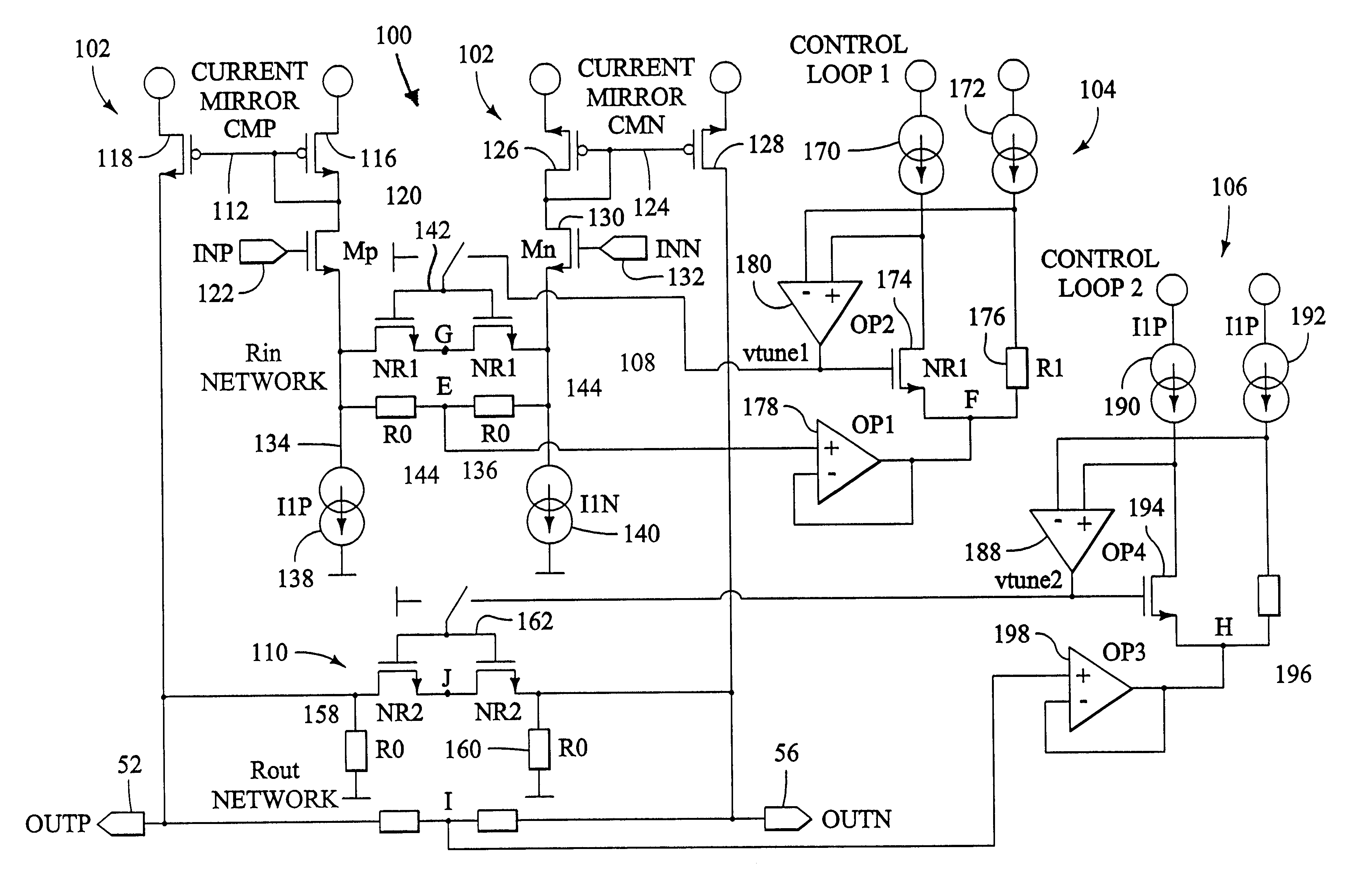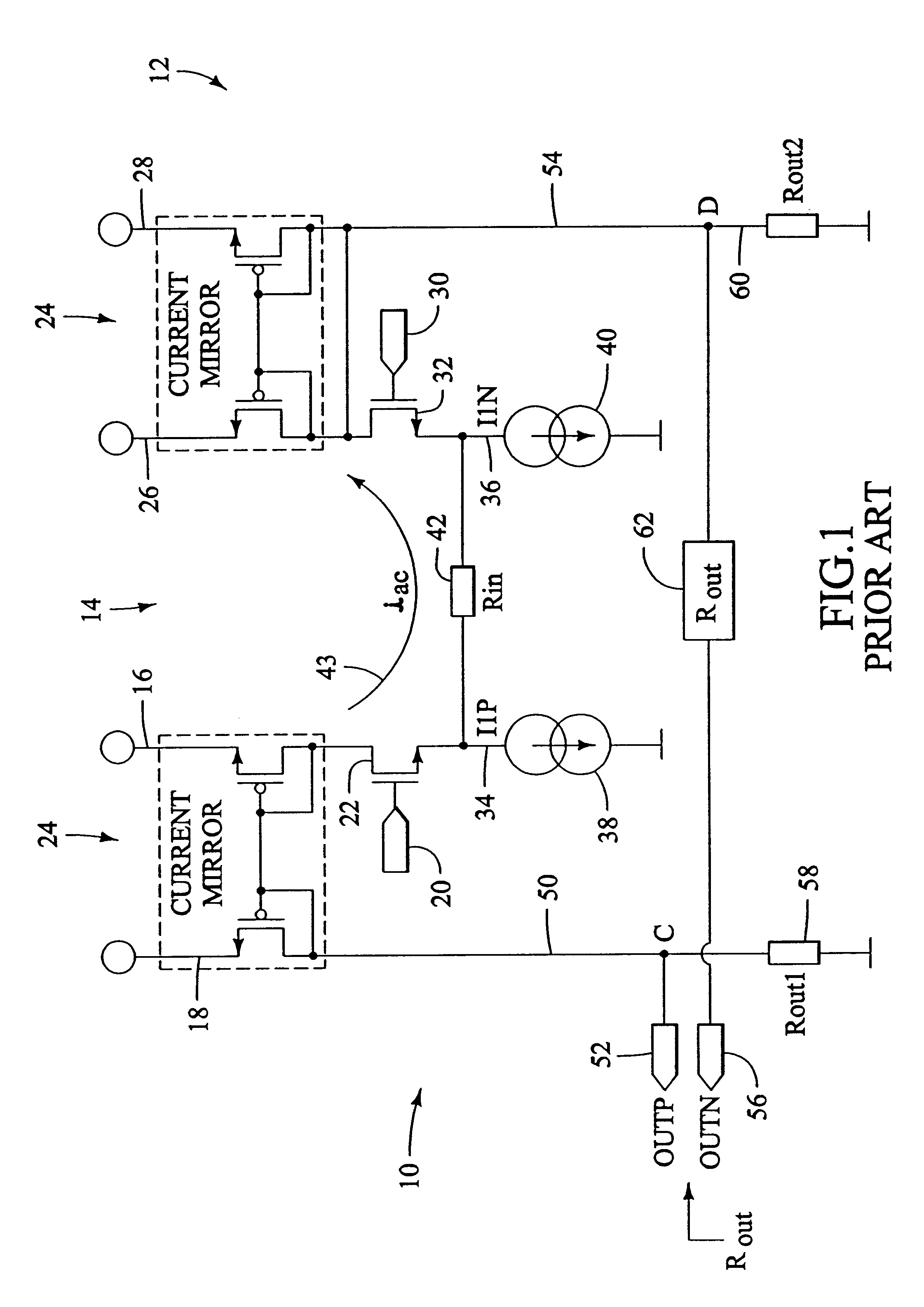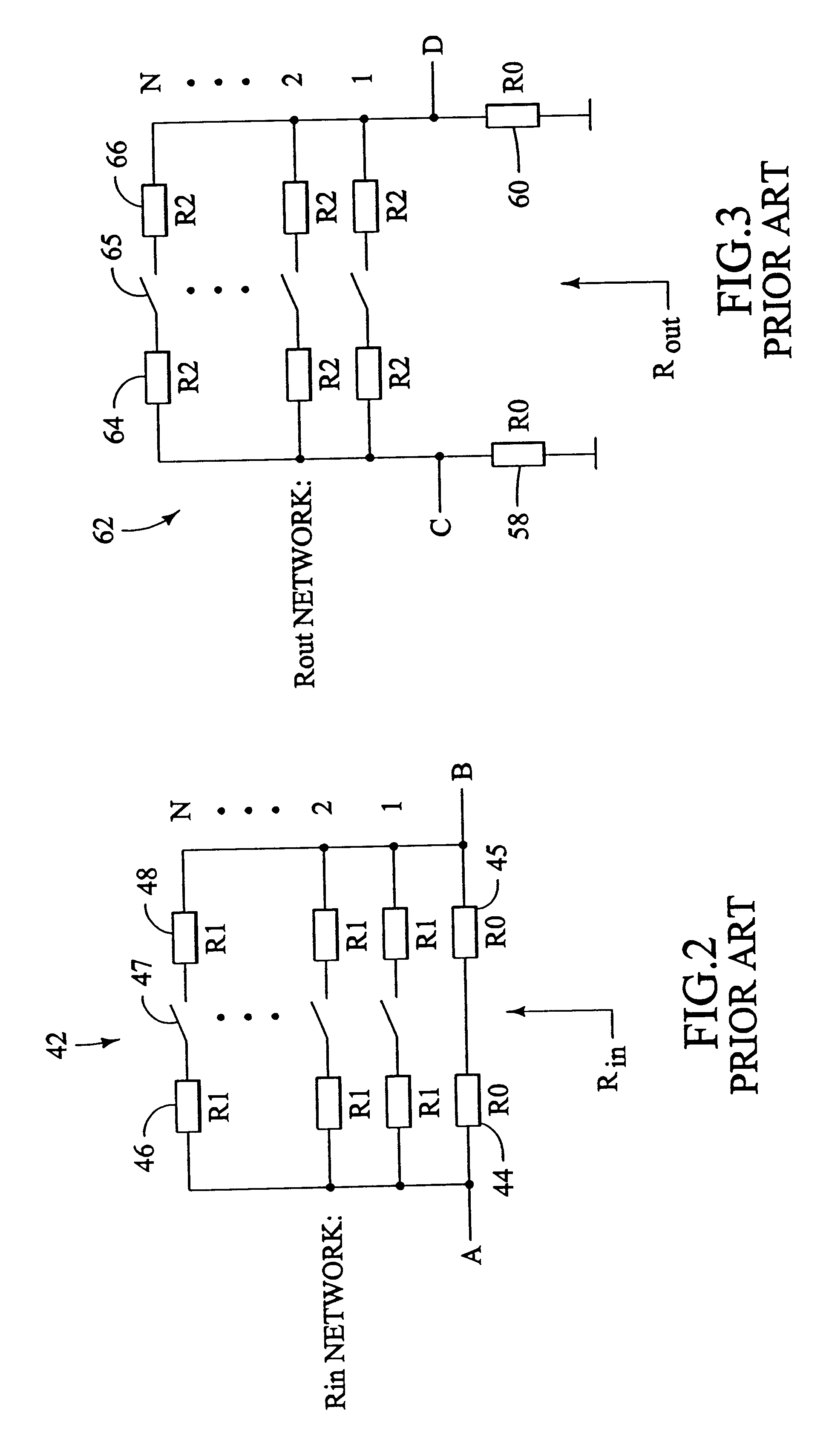Programmable logarithmic gain adjustment for open-loop amplifiers
a technology of logarithmic gain adjustment and open-loop amplifier, which is applied in the direction of volume compression/expansion, instruments, computation using denominational number representation, etc., can solve the problems of high cost of process, precision resistor, slow amplifier performance, etc., and achieve the effect of decreasing or increasing the input resistan
- Summary
- Abstract
- Description
- Claims
- Application Information
AI Technical Summary
Problems solved by technology
Method used
Image
Examples
Embodiment Construction
In the discussion below, transistors are described as CMOS transistors, and in particular as PMOS (positive MOS) or NMOS (negative MOS) transistors. Those skilled in the art will recognize that the terms p-channel and n-channel might more accurately describe the transistors discussed herein, since these transistors are no longer manufactured by depositing metallic elements, except possibly for external connections. Rather, polysilicon is doped to either p-channel or n-channel, indicating whether the channel between source and drain conducts via depletion mode (holes) or enhancement mode (electrons). Nevertheless, the terms PMOS and NMOS are more-commonly used, and are so used herein to mean those transistors manufactured by CMOS processes.
FIG. 1 is a simplified drawing of a prior art amplifier using a differential transconductance in its input and output portions. Amplifier 10 has an input portion 14 and output portions 24. The sources of transistors 16, 18, 26 and 28 are connected ...
PUM
 Login to View More
Login to View More Abstract
Description
Claims
Application Information
 Login to View More
Login to View More - R&D
- Intellectual Property
- Life Sciences
- Materials
- Tech Scout
- Unparalleled Data Quality
- Higher Quality Content
- 60% Fewer Hallucinations
Browse by: Latest US Patents, China's latest patents, Technical Efficacy Thesaurus, Application Domain, Technology Topic, Popular Technical Reports.
© 2025 PatSnap. All rights reserved.Legal|Privacy policy|Modern Slavery Act Transparency Statement|Sitemap|About US| Contact US: help@patsnap.com



